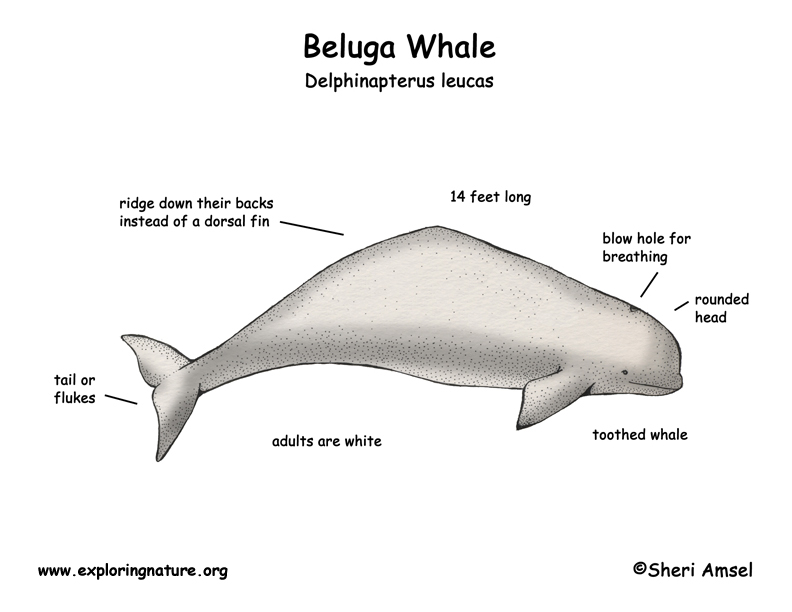

They are found in arctic waters along the coasts of Canada, Alaska, Russia, Norway and Greenland.
In the summer, they are found where rivers meet the ocean, where the water is warm and shallow and not as salty as the open ocean (brackish). They often travel up and down the coasts.
They are all white as adults (they are born dark-colored) with a ridge down their backs instead of a dorsal fin. Males reach more than 2,000 pounds (a ton) and 14 feet long. Females are smaller. They have more than 3 inches of blubber to keep them warm.
They travel a long way between seasons (migration). They have good hearing and use radar (echolocation) to hunt fish in dark waters. They can dive to more than 2,000 feet looking for fish. They also make a lot of calls to each other with whistles, squawks and grunts.
They are toothed whales and feed on fish and other small ocean creatures.
They are hunted by polar bears and killer whales.
Females are pregnant for 14 months (gestation). They only have one calf every 3 years.
They can live up to 30 years in the wild. They are listed as a "vulnerable" species.
Kingdom: Animalia
Phylum: Chordata
Subphylum: Vertebrata
Class: Mammalia
Order: Cetacea
Suborder: Odontoceti
Family: Monodontidae
Genus: Delphinapterus
Species: Delphinapterus leucas
When you research information you must cite the reference. Citing for websites is different from citing from books, magazines and periodicals. The style of citing shown here is from the MLA Style Citations (Modern Language Association).
When citing a WEBSITE the general format is as follows.
Author Last Name, First Name(s). "Title: Subtitle of Part of Web Page, if appropriate." Title: Subtitle: Section of Page if appropriate. Sponsoring/Publishing Agency, If Given. Additional significant descriptive information. Date of Electronic Publication or other Date, such as Last Updated. Day Month Year of access < URL >.
Amsel, Sheri. "Whale (Beluga)" Exploring Nature Educational Resource ©2005-2024. December 15, 2024
< http://www.exploringnature.org/db/view/404/ >

